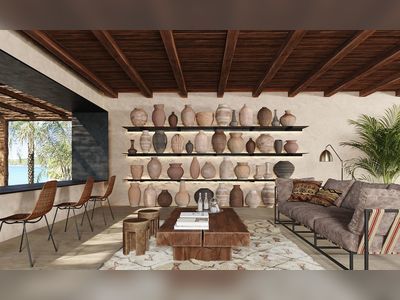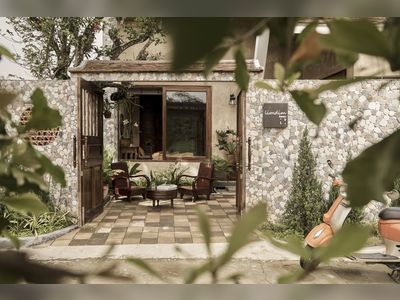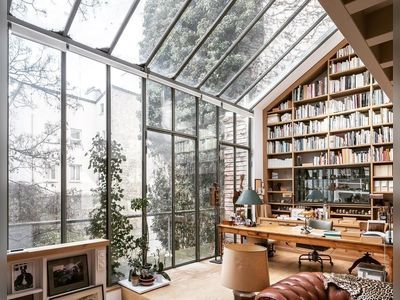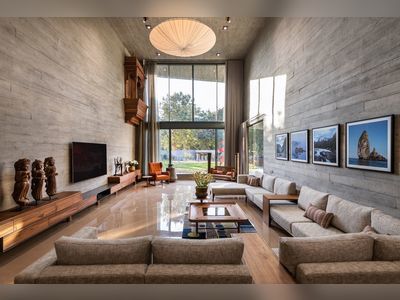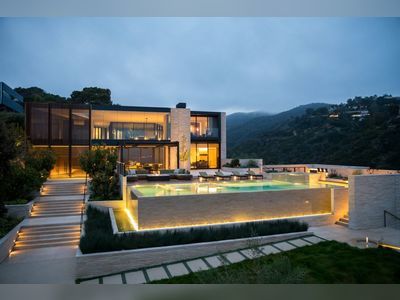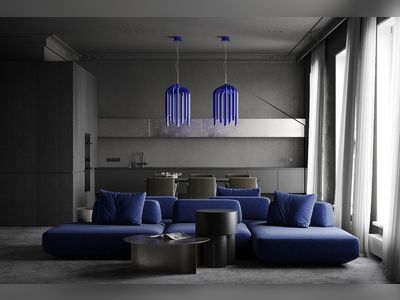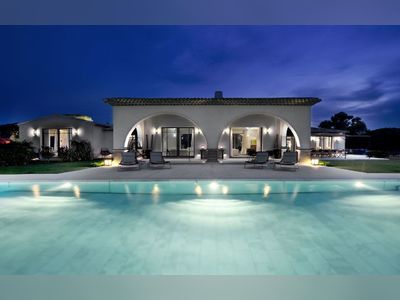The designer, who worked on the Mandarin Oriental Dara Dhevi, has moved away from Lanna traditions for his own accommodation, instead skilfully combining the arts and cultures of Burma, Nepal, India, Tibet and China.
He describes his four-storey building as "a conceptual home". Comprising eight rooms, the theme of the decor reflects women, mountains and cultures.
"The concept changed many times," says Rachen.
"I finally compromised by using the art I like the most. Using the location of the property as a guide, I felt Doi Suthep reflected the end of the eastern Himalayas. So I decorated At-Niman with a Himalayan feel."
Among items for the house Rachen has picked up on his travels for his work are small ceramic bowls from Afghanistan and a large wooden carved arch from India.
To ensure the house gets the right amount of light, he designed cement blocks for the walls and painted them in pink and blue hues, the colours he says inspired him during his visits to Jaipur and Udaipur in India.
"I want to have a comfortable and stylish home with a swimming pool. But that requires a considerable amount of money for maintenance. So rather than design a private home, I created more rooms to earn money."
Rachen bought the 105-square-metre plot of land, dealt with the landowner and finalised all governmental documents in just one day.
"For more than 10 years, I drove my Vespa around Nimmanhaeminda Road and swore to myself that my ID card would bear the Nimmanhaeminda address someday," recalls the alumnus of Chiang Mai University.
Construction of At-Niman took eight months and cost more than Bt20 million, excluding the original investment in the land.
The designer says he's about 90-per-cent satisfied.
"I told my partners just to support me financially and to believe in me. I promised I would build a charming, elegant and comfortable home," he smiles.
In the four months since it opened, At-Niman has received a warm reception from both Thai and foreign visitors.
"I have a marketing team. My customers come from Bangkok, Europe, the US and Japan."
"My place is among the few hotels in the world to offer five-star accommodation at a low price," says Rachen, adding that At-Niman uses the same quality mattresses and bed sheets as the Mandarin Oriental Dara Dhevi.
At-Niman's rates are Bt7,000, Bt6,000 and Bt5,000 depending on the size of the room. The eight rooms have been given women's names - Kumari, Pingleeya, Sri Kiriya, Nang Inn, Chom Fah, Suthepha, Ann Fond and Kham Pin - and each is decorated in a different theme.
"The Kumari room is inspired by Nepal's Kumari, a young girl believed to be the reincarnation of the goddess Durga. I brought the wooden carved arch from India and decorated the room with door locks."
"Every room has its own balcony with a relaxing corner except Pingleeya, the room that's inspired by Burma's Inle Lake with the swimming pool directly in front."
Thanks to Rachen's functional design, the property also boasts a neo-Lanna restaurant, a garden, a swimming pool and, for Rachen and his partner, an office plus two more bedrooms.
"My room is the smallest and there's no style," says the 36-year-old designer.
Rachen has been working full-time at theMandarin Oriental Dara Dhevi in Bangkok for five years and feels very lucky to have been given the opportunity to handle such a big project.
He makes regular trips to Bangkok to supervise work on the hotel's new design on the banks of the Chao Phya River.
As an employee of the big hotel, his job description is clear: He is responsible only for conceptual design. At At-Niman, however, he has to deal with a range of issues, from design, image and concepts to service, maintenance and housekeeping.
"The hotel business is tiring, especially managing people. It's not a job that suits me. I might not be a successful businessman - I don't think about how many years it will take to break-even. I just want visitors to have a wonderful time at my place and feel like they are visiting a friend's home."
Despite the tiring aspects, Rachen admits that it's also fun. So much so, that he's already busy with a project in Chiang Mai's San Sai district. The three-rai plot of land is now under construction.
"Time passes and my thoughts have changed. Now I want to have a home outside of town. San Sai is not far and still peaceful. The new project is different from At-Niman. It will be finished this year."
"What style is it? We'll see."
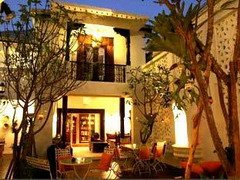
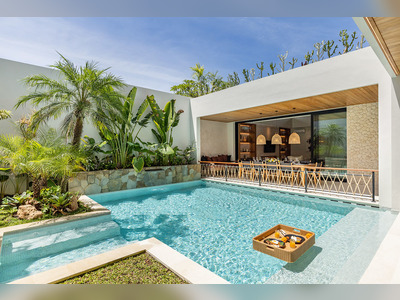
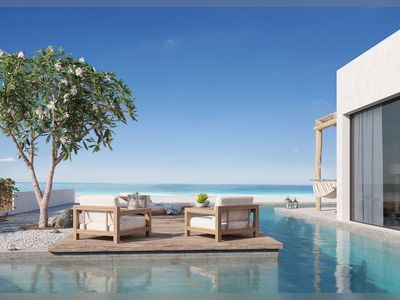
![A Tranquil Jungle House That Incorporates Japanese Ethos [Video]](/images/22/08/b-2ennetkmmnn_t.jpg)
